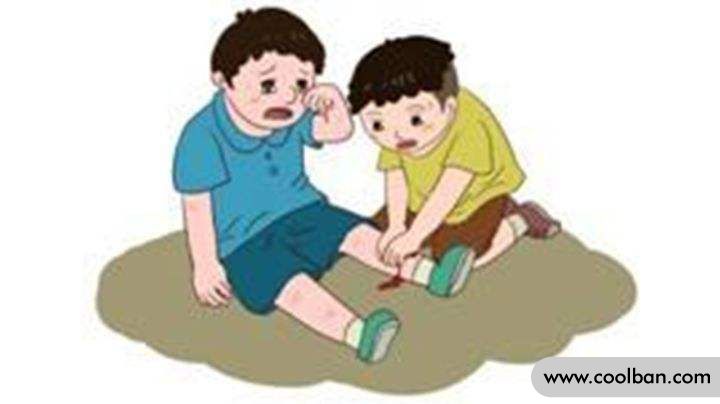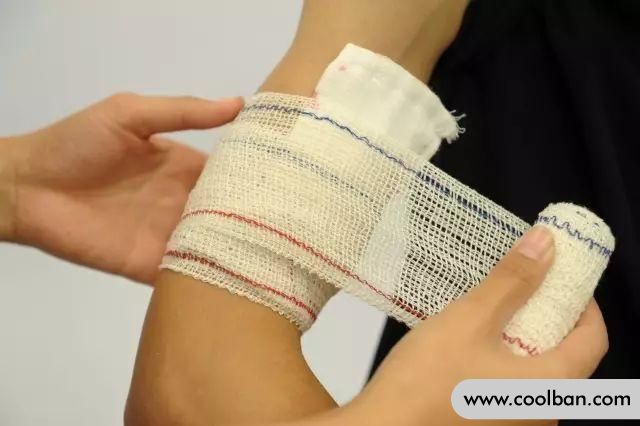Can I use Band-Aids for emergency hemostasis?
Children are lively and active, and like to climb up and down. It is normal for bumps, abrasions, scratches and bleeding to occur. Parents should learn the correct method of hemostasis. If a child accidentally scratches and bleeds, he can solve it by himself. , no need to go to the hospital.
If you encounter emergency bleeding in your child in your life, and see the child crying and the blood is unstoppable, will parents be at a loss? Learn how to deal with emergencies, don't use "home remedies" blindly, it is easy to be self-defeating and make things worse.
No, a parent didn't know where to hear the recipe, using sugar to stop the bleeding of the child is really a disservice.

Sprinkle sugar to stop bleeding, wrong!
That night, a pair of young parents held a bloody 4 year-old boy came to the emergency room. When giving him emergency treatment, the emergency doctor found many shiny, fine-grained foreign bodies in the wound. After inquiring, I found out that after the child fell, his head slammed on the iron sheet, and blood flowed. The child's mother remembered that the online remedies said that white sugar can stop the bleeding, so she hurriedly grabbed a large amount of white sugar and sprinkled it on the wound to stop the bleeding. The doctor warned parents: Sprinkling sugar on the wound will not only stop the bleeding, but also cause infection. If the sugar concentration is too high, a hypertonic environment will be formed locally in the wound, which is not conducive to the healing of the wound. The best hemostasis method for scalp trauma is to use compression hemostasis.

Correct steps of hemostasis method: "one pressure two packs" hemostasis method
1. Compression hemostasis
When you see bleeding from the wound, immediately press the bleeding area with your hand. Use clean gauze and other items to directly press the wound to stop bleeding, or press your fingers on the adjacent bone at the proximal end of the bleeding artery to block the blood source to stop bleeding.
If the bleeding site is an extremity, you can elevate the bleeding arm or leg to help stop the bleeding.
2. Bandaging
After compression to stop the bleeding, the wound should be disinfected as necessary, and then bandaged with gauze, bandage or clean cotton. The principle of bandaging is to cover first and then wrap, with moderate strength.
Cover the wound with a cotton pad that is larger than the wound, and then wrap it with a bandage or triangle. The bandage should not be too tight, it is better to be comfortable.
3. If you cannot stop the bleeding yourself, go to the hospital immediately
If it is a large wound and you cannot completely stop the bleeding yourself, you should go to a regular hospital for treatment immediately.

Band-Aids are not a panacea
In life, we often use band-aids for dressing, but band-aids are not a panacea and cannot cure all injuries. It's just an emergency tool for hemostatic bandaging.
Because the water absorption and air permeability of the band-aid are very poor, it is not conducive to the absorption and drainage of blood, but it is easy to cause the growth and reproduction of bacteria. In some cases, the wound is not easy to heal, and it is easy to cause infection.

In these cases, don't use Band-Aids to stop bleeding
1. Deep, narrow wounds, such as when a nail goes into a finger or toe
Do not use band-aids to stop bleeding. After disinfection and bleeding, the wound should be exposed to the air to prevent the reproduction of anaerobic bacteria. If necessary, a tetanus shot should be used for prevention.
2. When the wound surface is not clean or there is a foreign body in the wound
It is not possible to directly use a band-aid to stop bleeding. The foreign body should be removed first, and then disinfection and bandaging should be done.
3. Larger wounds or wounds with secretions or pus
For this kind of wound hemostatic bandaging, it is best to go to a regular hospital for disinfection, debridement, suture and bandaging.
